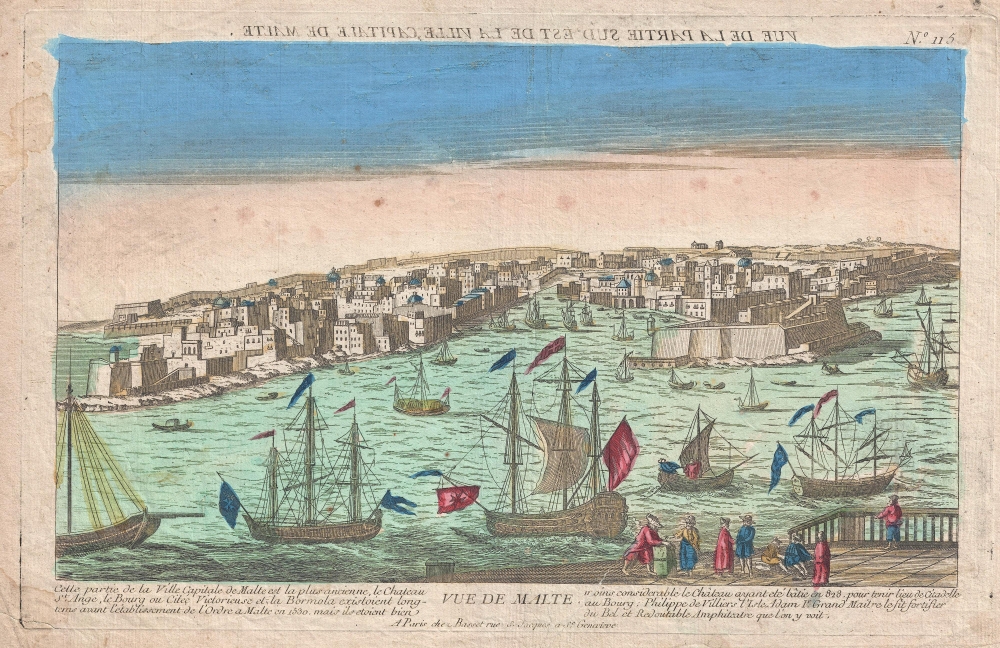1780 Basset Optical View of Valletta, Malta
VallettaMaltaView-basset-1780
Title
1780 (undated) 10 x 15.5 in (25.4 x 39.37 cm)
Description
Historical Context
In 1780, Valletta, Malta, was a flourishing center of culture and commerce, having been established over a century earlier by the Order of St. John. Known for its Baroque architecture and formidable fortifications, the city reflected the wealth and power of the Knights of St. John. As a strategic Mediterranean port, Valletta thrived on trade, attracting merchants from across Europe and beyond. Culturally diverse, the city was a melting pot of European and Mediterranean influences, with a vibrant arts scene. However, this period also marked the beginning of change, with the Knights' influence waning and the rise of other European powers, foreshadowing significant transformations by the century's end. Nonetheless, after Malta's repulsion of the overwhelming Ottoman fleet during the 1565 Great Siege of Malta, Malta and Valletta stood high in the European imagination and a bastion of European culture against the threat of Ottoman conquest.Optical Views
Optical Views, or Vues d'Optique, became popular in Europe in the middle part of the 19th century. These views, defined by exaggerated convergence lines, were intended to be studied through lens and mirror apparatuses that emphasized the 'perspective' effect. Thus the title, at the top of the view, is written in reverse. Such views became popular in the late 18th century, and publishers of optical views began to pop up all over Europe.Publication History and Census
This view was published by Chez Basset, Rue St. Jacques at Ste. Genevieve, Paris.Cartographer
André Basset (Bassett; fl. 1768 - 1784) was a well-known French publisher and engraver active on the Rue St. Jacques, Paris, during the 18th and 19th centuries. His office was located at the corner of Rue Saint Jacques and of Mathurins, à l'enseigne de Sainte Geneviève. The firm is closely aligned with the Chéreau family of printers and engravers, with whom they were connected with multiple, often incestuous, marriages and remarriages. Basset was best known for the production of low-cost optical views of European cities and events. However, the firm also produced games, maps, and other prints. The firm was taken over by Paul-André Bassett (1759 - 1829) in 1784. Paul-André Bassett himself retired in 1819, but the business continued under various family members until 1865. More by this mapmaker...

